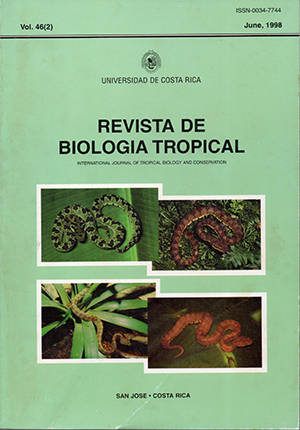Abstract
The gastrointestinal aetivity of an aqueous extrae! of the dry wood of Quassia amara was investigated using animal models. Oral administratíon of the extract to mice produces an increase of gastrointestinal transit al doses of 500 and 1000 mglkg. !he antiulcerogenic activity was measured inducing ulcers on Sprague-Dowly rats with indomethacin or ethanol and by the induetion of stress. The experimental group was treated orally with the extraet, using doses of 250, 500 and 1000 mglkg before indueing the uJcers. Animals treated orally with 0.5 mi of water and ranitidine (50 mglkg) were used as controls. AH the animals treated with the extrae! at doses of 500 and 1000 mglkg showed important proteetion against uleer generation. Piloric Iigation was used to stablish the activity on total acidity, peptie activity, non-prote¡n sulfhydryl groups, and mucus produetion. Animals treated with 1000 mglkg showed a reduetion on acidity and peptie activity. No aetivity was deteeted on mucus production and non-protein sulfhydryl groups at these dosis bul with 1500 mglkg they showed an inerease on non-protein sulfhydryl groups proTransformar mayúscula a minúscula:##plugins.facebook.comentarios##

This work is licensed under a Creative Commons Attribution 4.0 International License.
Copyright (c) 1998 Revista de Biología Tropical
Downloads
Download data is not yet available.






